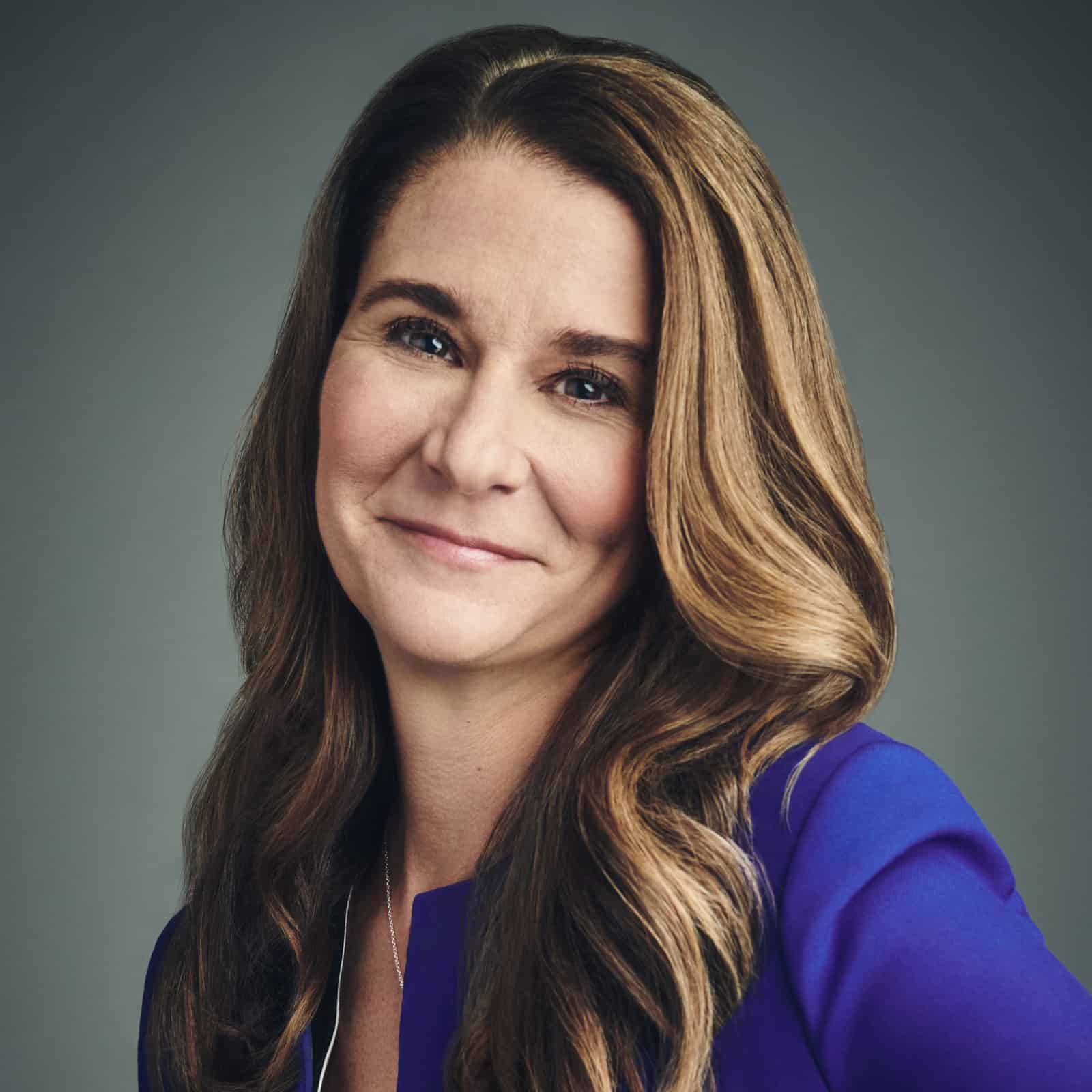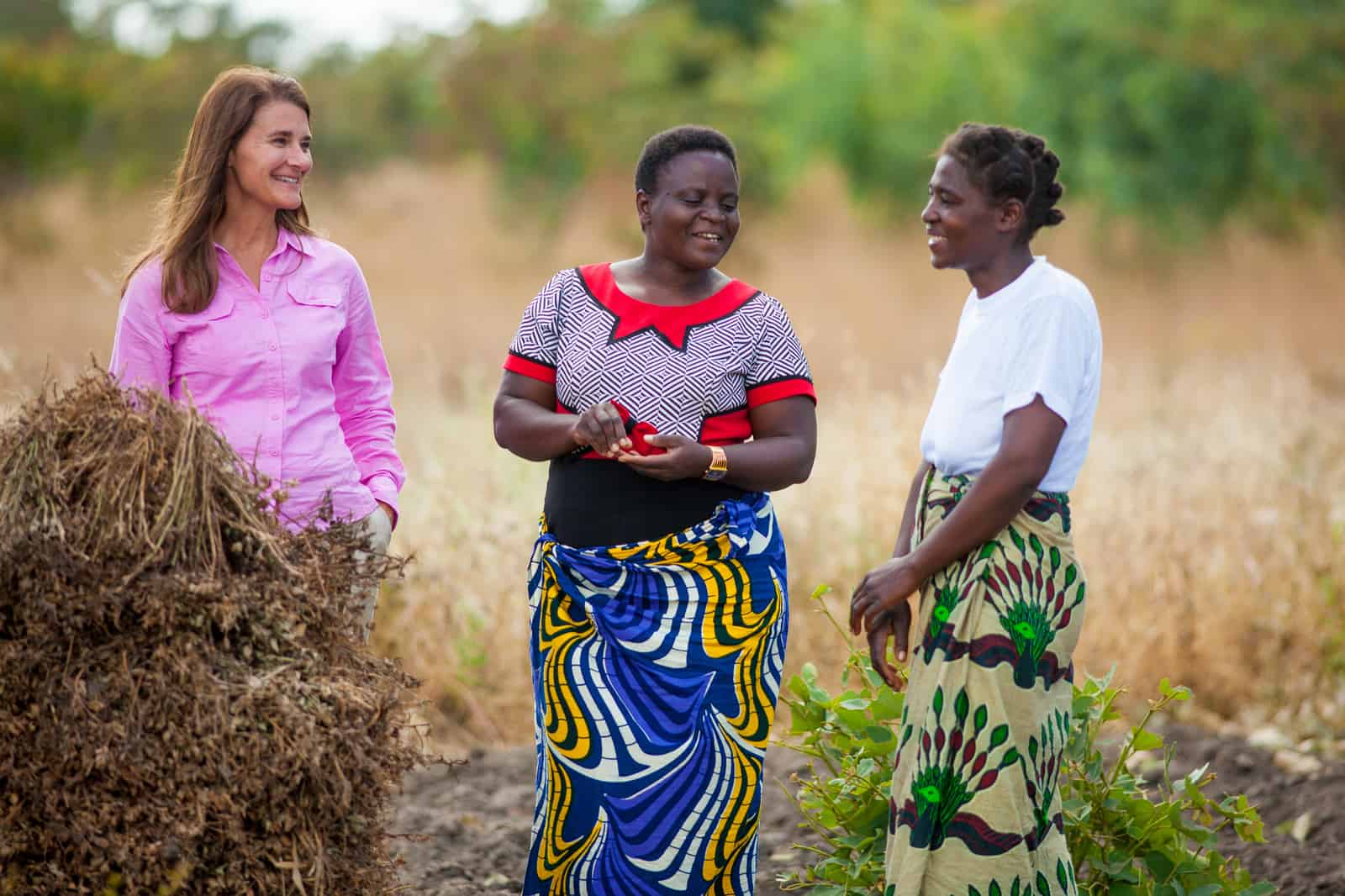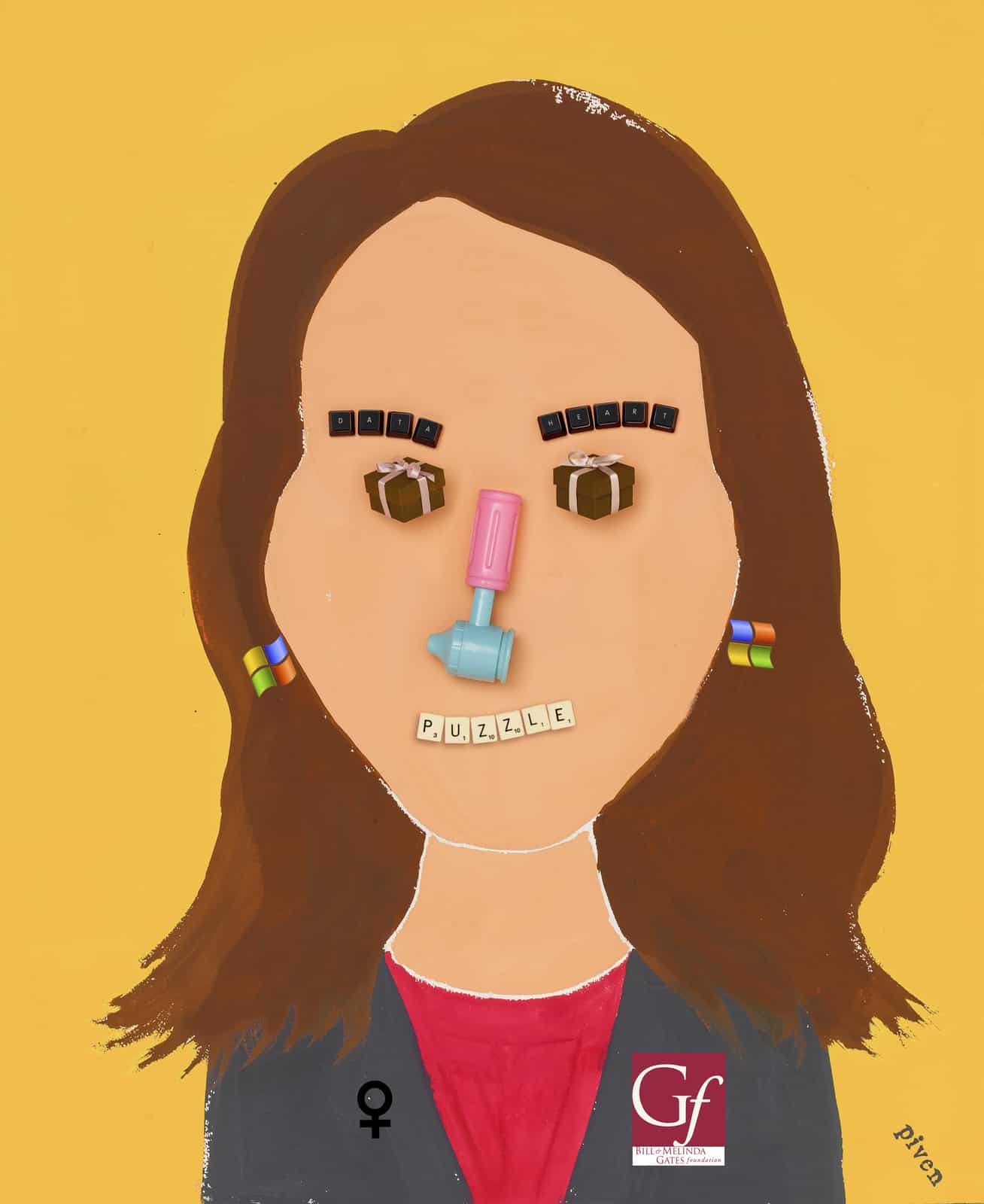ILLUSTRATION BY HANOCH PIVEN
When Melinda Gates became pregnant with her first child in 1995, she decided to leave her career to be a stay-at-home mom. The only woman in her entering MBA class at Microsoft, she was passionate about bringing more girls into tech, but she’d also grown up with certain assumptions about gender roles. She knew that not needing to work was a privilege, but she took for granted that, thanks to birth control, she could time her pregnancies and choose how many children to have. At the time, she didn’t realize the broader implication of how the inability to make such decisions impacts women all over the world.
Now, after 20 years as cochair of the Bill & Melinda Gates Foundation—the world’s largest private charitable foundation—she has connected the dots. Through the Foundation’s work in health, education, and family planning and through talking to women all over the world, she has come to see how many societal ills stem from the oppression of women, their lack of bodily autonomy and economic agency, and the absence of structures to accommodate working mothers (even in countries like the U.S.). In her illuminating new book, The Moment of Lift: How Empowering Women Changes the World, Gates takes us on her data-driven journey of discovery, pulling back the veil of gender mystification to reveal the global impact of this oppression. The Moment of Lift is as persuasive as it is incisive, as methodical as it is impassioned. It seems destined to launch a thousand great ideas.
First of all, why did you write The Moment of Lift?
I’ve been fortunate to travel for 20 years for the Foundation, and I’ve met so many extraordinary women who helped me understand this journey to women’s equality. It really called me to action. It felt like the right time to say we all need to participate if we want to get to full equality for women.
You begin the book by saying that empowering women changes the world, then flip the perspective to analyze how the systemic nature of our disempowerment stems from deeply held patriarchal beliefs and customs. How can we learn to look at things from a different perspective?
So often we think [our disempowerment] is because of ourselves—the way we’re behaving or acting—when, in fact, we’re part of a larger system. More often than not, that system has things that hold us back. That’s why I describe child marriage in the book, how destructive it is for a young woman. It literally locks her into a cycle of poverty. All of our economies around the world are built on the backs of women’s unpaid labor, but we don’t talk about it much here in the United States. How do we recognize the unpaid labor we do in the home, whether it’s laundry, homework, filling lunch boxes, or cleaning? How do we look at how we can redistribute it between us and our partners so that we’re doing an equal amount of work at home? We know that 70 percent of women with children under the age of 18 are working. How do we recognize it, redistribute it, and reduce it as well?

I would say very little. It was how I had grown up and how I had seen other moms in our community. I didn’t really question what my role would be. I also have a husband who’s a CEO of one of the largest tech companies. That is a 60-hour-a-week-plus job, so I knew that if we wanted to have the right values for our kids, somebody had to be home to set those values. Neither of us wanted our kids raised by someone else. The reason Bill was so surprised is he knew how much I enjoyed my job. I think he wanted to make sure I kept alive that piece of me that also enjoyed being a professional woman. It took me a while to figure that out, but he was supportive from day one.
You say that when your daughter was 2, you still weren’t sure you would have called yourself a feminist. What changed?
It came to mean that a woman has to have full decision-making authority everywhere in her life—in her home and in her workplace. I wasn’t considering what it’s like for women in other places in the world. It took traveling to see how far behind women were in other countries before I came back to the U.S. and said, “How far are we really as a society in the United States?”
What was the catalyst for you?
I remember a moment when I was on a flight coming home from Africa. I’d been talking to this woman, Sadi. She had five children, and she knew about [contraceptives], but they weren’t available at a clinic nearby. She was mad. She was saying, “Don’t you see? I have very little land, and it’s arid here. I can’t get anything to grow. It would be unfair to my children if I had another one.” To have another baby would be a crisis in her family. I kept thinking, I wish she was more empowered. Then I turned the question back on myself. The birth control pill allowed women in the United States to come into the workforce in droves, but less than 5 percent of women are CEOs. We came into the workforce, but how empowered are we? That was really the moment that I started to say, “OK, I want to start to do more about this.”
There are so many articles about the low number of women in business, tech, science, and entertainment, but few question why women are massively underrepresented in every sector where there is power or money. We never seem to acknowledge this is a systemic problem.
I absolutely agree with that. I’m a huge optimist, but I do have to question the reality. For instance, right now everybody’s writing about all these amazing women in Congress. We’re hearing about how their voices are changing the discussion, or how the Senate, by having women on the committee, called the military to task about harassment. On one hand, it’s fabulous that we have more women in Congress now, but we’re still only at 24 percent. We’re all celebrating, but [at this pace] it’s another 50 to 60 years until we get to 50 percent. Why aren’t we talking about how, percentage-wise, the progress is actually pretty small? To me, if you’re going to right society, you fix policies, and you fix where the structures of power are. That means taking a very hard look at finance, at political life at all levels. You look at media. You look at tech, which is driving our life and changing how we communicate, our health. Women have to have a seat at that table and be the designers and the creators of tech. It’s not only great for business; it’s great for society.
I’ve done a lot of research on women’s issues, but I didn’t realize, for instance, that unmarried women couldn’t get contraceptives until 1972. Why is our history still so unknown?
Who’s writing our stories? Go back 20 years and ask yourself, “Who held the pen? Mostly women or mostly men?” Women’s stories have to be captured and told and passed on. It’s how we learn and grow as a society. It’s the only way we’re going to change our own narrative and lift everybody up. It takes both men and women, not just women.

Morality gets evoked a lot in arguments that are used to control women’s bodies. You write that there is no morality without empathy—what do you mean by that?
You have to connect with other people. You have to walk beside them as a peer and understand their life and the policies or church teachings that maybe were written down hundreds of years ago that are holding those people back. For me, it was these women’s stories. It was being with these women all over the world telling me the same thing over and over again, which was, basically, “I don’t have the means to do that. I don’t have that contraceptive.” In the Catholic Church, it’s a core teaching that women shouldn’t use contraceptives, but in the United States, we know over 90 percent of Catholic women use them. If I hadn’t been able to empathize with those women, I would have never gone against my church on this. For me, morality is asking, “Who’s deciding that these women should be locked into a cycle of poverty because of a policy? Or lose a child, or a mother, or a sister?” When I go into these villages, the number of people who know someone who has died in childbirth is staggering. To say we have a policy that’s based on morality that could change that life circumstance? Wow. That, to me, is when you look morality squarely in the face and say, “Now that I’ve learned something, I need to update my beliefs.”
As you point out, education is critical.
Your worldview opens up. You start to say, “How do I want to live my life? Do I want to get a job? Do I want to have a child right away? Or do I want to do something else?” That’s the beauty of schooling—it opens up our minds. Then girls get to decide more for themselves how they want to fashion their life and their voice.
You write, “When the life of a girl is planned out, the plans serve everyone but the girl.” It made me think of fairy tales and how the stories that we grow up with shape our ideas about gender and keep us trapped in these roles.
I think stories are incredibly powerful. It’s why I’m so enthused to see more women in Hollywood demanding to be directors, saying, “We have great scripts. We want to produce more pieces that include women doing powerful things in society.” I see the difference that having Grey’s Anatomy on TV makes in my own home—the way my kids look at diversity, at gender in the medical profession—and it’s because of Shonda Rhimes. Over the weekend, I watched On the Basis of Sex, about Ruth Bader Ginsburg, with my youngest daughter and her male friends and their parents. We all came away from that movie with our jaws dropped—the boys too. They were like, “Oh, my gosh. I didn’t know what it took to change the body of the law in favor of women. I can’t believe what she was up against.” That type of story has a profound effect on how we view our history and even our roles today.
BY THE NUMBERS
1993
Year Melinda and Bill Gates took their first trip to Africa, inspiring them to pursue philanthropy on a grand scale
45.5 BILLION
Grant payments, in dollars, made by the Bill & Melinda Gates Foundation through 2017
2005
Year Time named her a Person of the Year, alongside husband Bill and Bono
2016
Year Barack Obama awarded her the Presidential Medal of Freedom
2.35 MILLION
Her Twitter following
